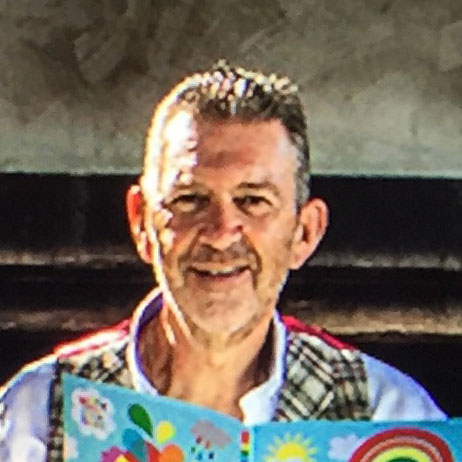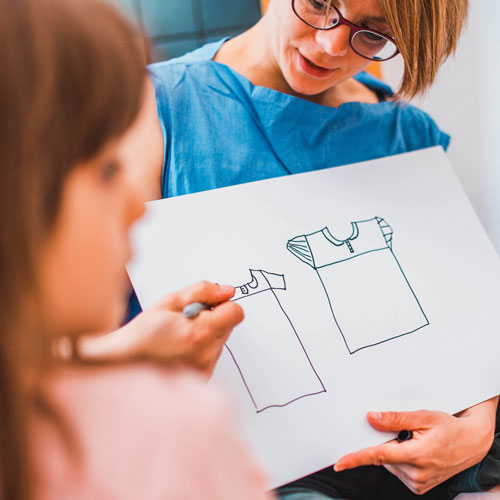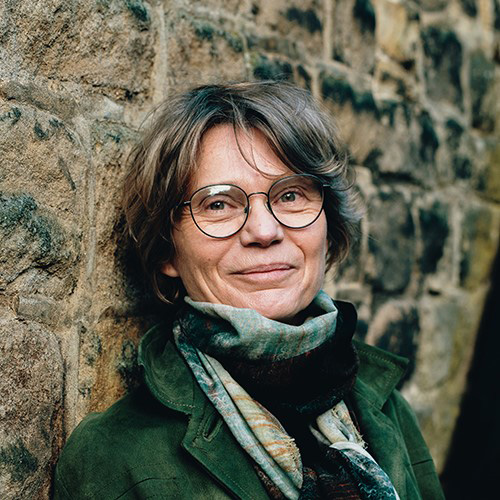Friday 23 April 2021
Keynote
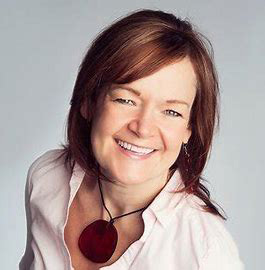
Dr Catherine Dormor
Reader in Textiles, Head of Research Programmes, Royal College of Art
How Did I Get Here?
Places
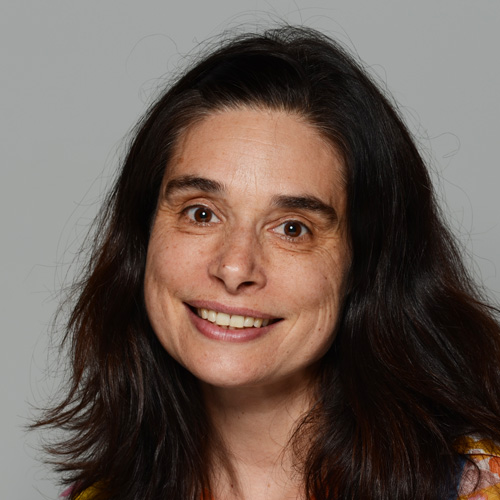
Dr Claire Barber
Senior Lecturer, Department of Fashion and Textiles, Uni of Huddersfield
Textiles and Railways: re-imagining patterns of textile production and circulation on the railway
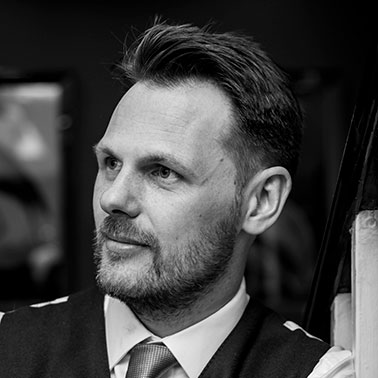
David Morrish
Senior Fashion Design Academic, Sheffield Hallam University
Windermere Am I Still Beautiful? Art, Athletics and Activism

Nicola Redmore
Subject Group Lead, Department of Fashion and Textiles, Uni of Huddersfield
Clogs and bogs and cloth

Nicola Perren
Senior Lecturer, Department of Fashion and Textiles, Uni of Huddersfield
Quilt Making as a Communal Act

Claire Wellesley Smith
Artist/Writer, Postgraduate Researcher at The Open University
The Bradford Covid-19 Stitch Journal Project
Lunch and finding out more
Finding out more about undergraduate courses in Fashion and Textiles at the University of Huddersfield
Do drop in to say hello to some of the academic staff who teach on our fashion and textile undergraduate courses in the Department of Fashion and Textiles at the University of Huddersfield. Have all your questions about doing a degree in a fashion and textiles subject answered!
Clothing and Shopping
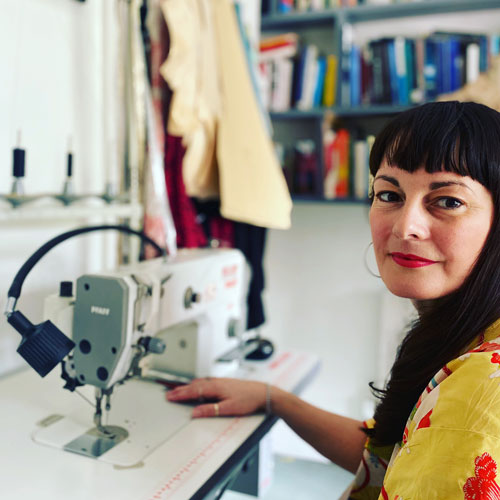
Sam Hudson-Miles
Senior Lecturer, Course Leader of Fashion Design BA suite, Uni of Huddersfield
Soul-Shopping: a study of charity shopping in Dewsbury
Sustaining creative practice in Covid-19

Kerry Walton
Textile Designer and Weaver
Restrictions, Opportunities and Creative Weaving Practice
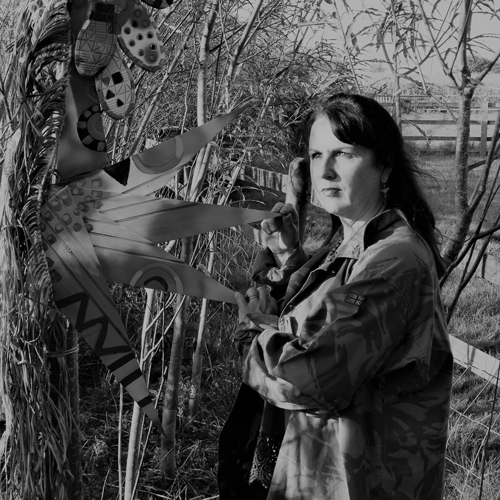
Sally Gaukrodger-Cowan
Senior Lecturer and RIT at De Montford University, and Artist
Agricultural Textile Upcycling in Covid-19
Roundtable: WOVEN in Kirklees - discussion with Q & A
This session takes the form of a roundtable discussion about WOVEN in Kirklees. Festival Director Natalie Walton, Strategic Lead for Cultural Development at Kirklees Council, Kath Wynne-Hague and Project Leads for the Big Rainbow Knit and Growing Colour Together will be available to discuss aspects of the festival initiative, what the line-up for June 2021 looks like and how you can get involved. Chaired by Dr Rowan Bailey.
Dr Catherine Dormor
Reader in Textile Practices, Head of Research Programmes, Royal College of Art
How Did I Get Here?
With a background in maths, it seems strange to have just published a book on textile practices and philosophy and to be working in an art and design university. In this talk, I will be weaving my background and training with my artistic and academic practice, to explore the role of textile as a means for thinking and articulating feminist principles. Textiles, their structures, behaviours and production sit at the heart of metaphors and models across philosophy and literature and this becomes a point of departure for this talk, looking at weaving and stitching as material practices in terms of their potential to speak into contemporary notions of the feminine and transnational belonging.
Dr Claire Barber
Senior Lecturer in Textile Practices, Department of Fashion and Textiles, University of Huddersfield
Textiles and Railways: re-imagining patterns of textile production and circulation on the railway.
Claire Barber is an academic undertaking practice-based research in the Department of Fashion and Textiles at the University of Huddersfield. Her intention for this talk is to reach out to broad audiences who use local community trains or live and work in the surrounding towns and villages through which a community railway line passes with a long term aim to increase the viability as well as ambition of creativity in local community transport contexts. Her presentation is a visual essay which asks how perspectives from artists can inform real-life considerations of sustainability and increasing passenger numbers on trains, and in turn, explore how poetic and esoteric concepts relating to public transport systems can become materialised in contemporary creative practice.
By considering the possibilities of practice-based methods, this research arose from an involvement with archival sources, lived experience and performative and site-responsive interventions on public transport systems. At the same time, close attention was paid to a multiplicity of concerns for artists undertaking creative expression identifiable by its purpose to reimagine patterns of textile production on public transport systems. For example, a black and white photograph of a women knitting on a subway in New York taken by Stanley Kubrick is emblematic, in this regard, alongside interventionist clothing by artist Menja Stevensen, destabilising a muted visual perception of upholstery fabric used on trains. Looking within my own creative practice several artworks have sought to redefine the boundaries of a form of textile art that attends to social and cultural histories of textile production processes that flow along the railway. This visual essay is the next step in this enquiry with a focus on the real and speculative role textiles has to offer local community rail services.
David Morrish
Senior Fashion Design Academic at Sheffield Hallam University
Windermere Am I Still Beautiful? Art, Athletics and Activism
Lake Windermere in the Lake District is classified as a world heritage site for natural beauty. Surely, we are looking after it and not using it as a litter bin? Are we?
This presentation shows the stages of an ambitious collaborative project involving 20 members of the Sheffield branch of the Embroiderers’ Guild in an attempt to highlight the impact of pollution, specifically man-made post-consumer waste (Littering) has on our visual environment. Using the Brathay Windermere Marathon 2019 as a case study, the artist athlete, David Morrish, has used digital technologies to record the event and identify litter along one of Britain’s toughest (but arguably most scenic) 26.2 mile courses. The research has then been individually translated and creatively interpreted to form a Bayeaux Tapestry inspired 26.2ft piece of embroidery, representing the event and the litter in the immediate area it was spotted. This piece is bright, bold and impacting, displaying a range of interpretations and artistic styles. It is a testament to hand and machine embroidered techniques and creative vision. The question is… Can you spot the litter in all 26 sections or have you become litter blind and oblivious to it?
A Yorkshire based award winning Disruptive Designer, Senior Fashion Design Academic at Sheffield Hallam University with an MA in Fashion and Textiles from Nottingham Trent University, David Morrish is winner of the Hand & Lock Wilcom Digital Embroidery Award 2019, Embroiderers’ Guild Scholar 2020/2021 and SHU Inspirational Teacher of the Year 2018. David is a practicing designer and academic with vast experience across the art and design and education sectors. David’s passion lies in storytelling through traditional crafts, new technologies and multi-disciplinary practices, in order to break barriers, preconceptions and challenge stereotypes.
Nicola Redmore
Subject Group Lead, Department of Fashion and Textiles, University of Huddersfield
Clogs and bogs and cloth
This work celebrates the heritage of textile design education in the Kirklees region and uses the practice of woven textile design as a vehicle to continue the evolution of this discipline. This work will investigate the potential to take design practice out of the classroom and into the landscape, a landscape that looms large and runs through the very DNA of the local population. The conversation between the grit and bogs of the Pennines and the feet that walk upon it, is long established and continues to be an important influence on the cloth produced in the area. Using techniques derived from the geotextiles that protect this important moorland habitat, the leno method of weaving has been selected as the perfect vehicle to illustrate a weaver’s topographical exploration of these routes.
Repetitive yet varied movement akin to the throw of the weft across a loom, focuses the mind and asks one to consider the path across the terrain before mapping these routes through the medium of cloth. This work explores the deep links textiles have with specific places, and considers place-based design and its role in the future of this region.
Nicola Perren
Senior Lecturer in Textile Practices, Department of Fashion and Textiles, University of Huddersfield
Quilt Making as a Communal Act
There has been an exponential rise in the engagement with amateur based activities since the turn of the century, particularly for textile-based crafts such as knitting, crochet, quilting and cross stitch (Bratich & Brush, 2011; Minahan & Cox, 2007; von Busch, 2010). While under lockdown conditions due to Covid 19, craft making in the home has grown and has become more evident as we gather round the internet to develop new skills and make connections with others through online sources.
This presentation covers aspects of research practice carried out as part of my PhD thesis [Activating the Amateur in an Arts Practice]. My PhD explores the autonomous actions of amateurs through communal making activities, with a particular focus on quilting as a form of textile craft, when undertaken in the home as a site for craft-based making. As a participant observer in a longitudinal case study, I was able to be, in part, assimilated into the communal voice and practice of the Meltham Quilting Bee [MQB]. Adopting the slow, hand generated making practices of the inspiring Quilters of Gees Bend, Alabama, USA, this research also considers the actions and choices we make when we have opportunities of autonomy through creative practice and an understanding of how this adjusts when the making of work is a shared and social experience.
References:
Bratich, J. Z., & Brush, H. M. (2011). Fabricating Activism: Craft-Work, Popular Culture, Gender. Utopian Studies, 22(2), 233–260.
Minahan, S., & Cox, J. W. (2007). Stitch’n Bitch. Cyberfeminism, a Third Place and the New Materiality. Journal of Material Culture, 12(1), 5–21.
Von Busch, O. (2010). Exploring net political craft: From collective to connective. Craft Research, 1(1), 113–124.
Claire Wellesley Smith
Artist/Writer (Slow Stitch: Mindful and Contemplative Textile Art and Resilient Stitch: Wellbeing and Connection in Textile Art. Batsford, 2015, 2021). Postgraduate Researcher at The Open University.
The Bradford Covid-19 Stitch Journal Project
This presentation addresses reflective practice, wellbeing and Covid-19. Since 2013, alongside my community and studio-based textile practice I have worked with my own example of ‘reflexive research’ (Kara, 2020) an (almost) daily stitch journal. The use of textile as a creative recording method felt appropriate when I considered the entanglements of theory and practice around my community projects. The journal itself is a long length of recycled linen cloth, pieces added in sections, now almost 5 metres long. It is covered in rhythmic improvised hand stitches, mostly using the most basic plain sewing technique, running stitch. Emma Shercliff (2015) describes hand stitching as a ‘… slow and rhythmic craft that describes both functional and symbolic dimensions of joining and being attached.’ For me this solitary activity in a working life that is mostly surrounded by others has been a material-based method of carving out a different sort of thinking space. It has acted as a counter to the busyness of community spaces, the constant reflexivity required as practitioner researcher, offering a stillness and quieter contemplation. In 2020 during the first Covid-19 lockdown I used these methods in an online community project working with 30 women from the Bradford area, the Bradford Covid-19 Stitch Journal Project. The participants produced stitched responses to their experiences of lockdown: a collaborative piece of work that waits for a time when we can meet together in person to complete it. It offered an opportunity to think about wellbeing during the crisis, our own and in the wider community.
References:
Kara, H (2020) Creative Research Methods in the Social Sciences (Second new edition) Bristol: Policy Press.
Shercliff, E. Dropping in and dropping out: Hand stitching in places of social interaction. Craft Research, Volume 6 Number 2 © 2015 Intellect Ltd Article. English language. doi: 10.1386/crre.6.2.187_1
Weaver of a Life in Colour
Book talk by Malcolm Campbell
Our children face a world which is changing at an amazing pace .... the way we live our lives today will not be the way that children live their lives tomorrow. This scale of change at such an incredible pace can be overwhelming to young minds which are still inexperienced and developing. Children need to see the magic in the fundamentals of life and enjoy the happiness of living, they need to understand and appreciate the world around them.
The trilogy of Malcolm the Weaver books educates 4 to 8 year old children in the art of colour, textiles, craft, nature, the environment and sustainability, helping them to explore and ask questions. Children need to dream and to discover their destiny, Malcolm the Weaver inspires them to do this.
Julia Roebuck
Founder, Upcycle Fashion
Clothing in Circular Communities
Clothing in Circular Communities develops projects that support the charity retail sector to act as textile reuse hubs within their local community, facilitating the extended use of garments and the repeated circularity of textile assets within a community. In addition to raising over £295m for a range of causes in the UK, charity shops are well placed to act as pre-loved textile hubs within each of their own communities. They are embedded in the behaviours and culture of unwanted clothing in the UK and a well-travelled route for many citizens getting rid of unwanted products that are too good to take to their local Household Waste and Recycling Centre. When framed from a waste prevention perspective however, charity shops can go a lot further to connect pre-loved clothing with people and projects to keep many garments in active use locally through garment sharing, re-wearing, swapping, repairing, customising and upcycling programmes. Upcycle Fashion’s mission is to extend the useful life of clothing, and a circular approach at a local level seeks to join up community assets: People (sewers, volunteers), projects (Uniform Exchanges, Food Banks) and places (community centres, church halls) to match different categories of pre-loved clothing with the appropriate person or project to ensure garment longevity. This approach keeps the pre-loved clothing that charity shops can’t sort or sell in active use within communities, instead of being sold by the kilo to textile recyclers, which is better for people and better for the planet. The presentation highlights the opportunities for better resource circularity within local communities, focusing on the creativity and hand skills at the heart of engaging citizens with a slow textiles practice to embed emotional durability, understanding of process and wellbeing.
Upcycle Fashion was established by Julia Roebuck in 2010 whilst she was studying for the world’s first sustainable fashion Masters, MA Fashion and the Environment, at the London College of Fashion, University of the Arts London. Now based in Kirklees, Upcycle Fashion delivers garment repair and upcycling workshops and provides sustainable fashion consultancy services, specialising in circular economy solutions.
Sam Hudson-Miles
Senior Lecturer and Course leader of the Fashion Design BA(Hons) suite at the University of Huddersfield
Soul-Shopping: a study of charity shopping in Dewsbury
This presentation explores themes of post-growth fashion and emotionally durable design through autoethnographic, participatory, co-creative, and object-based research techniques. The research is centred within a defined locale of Dewsbury, a once thriving textiles hub and market town within the Heavy Woollen District of Kirklees, West Yorkshire. A personally collected and curated collection of second-hand vintage clothing, purchased from charity shops in Dewsbury, and over a 3-decade period, acts as the nucleus for developing a theoretically grounded practice of ‘soul-shopping’. As an inclusive methodology this grounded practice has the potential to contribute to the circular economy and be employed without prerequisite technical skills in fashion making, or expertise in fashion styling.
Maija Nygren
Knitwear Designer and educator
The Convertibles Clothing Project
Maija Nygren is a postgraduate working in the field of children's clothing and sustainability and teaches textile craft skills to young people and adults. The Convertibles Clothing Project explores ‘learning through clothing’ as a response to the reduction of craft skills in early years education and the sustainability challenges in fashion and textile production. The project is inspired by early childhood theories of Maria Montessori and Friedrich Froebel, combined with circular economy thinking and investigates how to make future proof kidswear that wholeheartedly takes the end user; the child, a future adult, into consideration.
Kerry Walton
Textile Designer and Weaver
Restrictions, Opportunities and Creative Weaving Practice
The focus of this talk will discuss my weaving practice through the lockdown periods during the last year, balanced with an academic post at Loughborough University. Our lives and individual working practices changed drastically in a matter of days in the Spring of 2020, as we moved into a state of isolation and restriction. Many found this sudden transition overwhelming and alarming, others sought to seek opportunity from the constraints offered by this and the subsequent lockdown. Whilst experiencing upheaval many designers, makers, craft practitioners, embraced the opportunity to think around the emerging challenges, to generate opportunities by exploring the potential to be more innovative. My own practice has developed in a number of ways, evidenced by work produced over the last year. The online digital workplace (teaching) created a craving for the tangible, the tactile, the handmade, motivating a renewed focus on weaving.
Valerie Wartelle
Textile Artist
A Sensory Dialogue (film and artist talk)
Process has always been very central to my practice, with a desire to understand why something happens and how to possibly manipulate it. More recently, I have been particularly interested in the sensory responses engaged through a creative process. In my experience, beyond the in-depth understanding of materials and mechanics of a craft, a more intuitive space opens when making - senses such as touch, sight, sound, motion and mechanoreception work in harmony and in response to one another. Irremediably this sensory dialogue becomes part of the artwork itself, and in turn stimulates the viewer’s senses, engages personal memories and narratives. I recently collaborated with a filmmaker to create a short film (3.30mins) which in my view illustrates beautifully the sensory journey within my practice – see link https://valeriewartelle.co.uk/my-practice.
Day 1 playlist
View presentations and videos from day 1 of the Woven in Practice conference
Sally Gaukrodger-Cowan
Senior Lecturer and RIT [ Researcher in Training] at De Montfort University and practice-based artist
Agricultural Textile Upcycling in Covid-19
My work is informed by a lifelong obsession with colour and pattern influenced by personal heritage, life experiences and travel. Inspiration comes from many personal collections, comparing, reflecting and responding to stimuli. Memories and abstract ideas, vibrant colour, texture and pattern are an essential part of my practice. My personal methodology in the response to stimulus is to experiment and develop ideas, create colourful eccentric visual works through sketchbooks, mini video, installation, agricultural waste upcycling and sampling. Throughout lockdown I have spent time exploring and investigating my artistic practice based in a tiny shed. I have felt re- energised and my creativity re-ignited. My shed practice has given me the opportunity to let go, experiment, try out new ideas and develop new ways of working. The shed has also fuelled new pedagogy and personal wellbeing. For the first time in 30 years I have had courage to explore new entities, enter competitions using polypropylene agricultural food sacks, develop a series of Covid inspired pieces, named Trovids, and create upcycled agricultural textile waste installations. Alongside the shed work I have attended online exhibitions, workshops, been a participant in post graduate research and created a one-person mini pop up exhibition. This creative immersion enabled me to rejuvenate my passion for the arts, fuelled wellbeing, enthusiasm in my pedagogy and direction.

